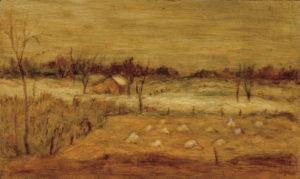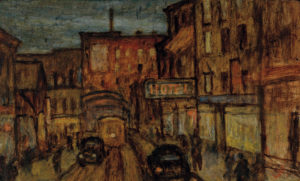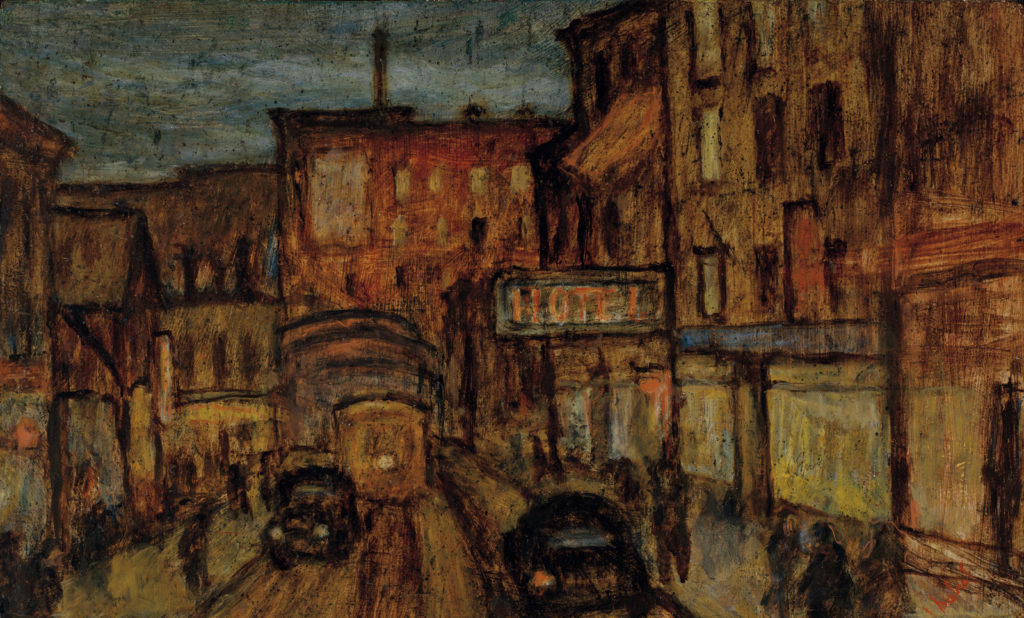What is it?
Artist
Joseph Friebert (Buffalo, New York 1908–2002 Milwaukee)
Title
Country Life (recto)/City Life (verso)
Year
early 1940s
Medium
Oil on Masonite
Dimensions
15 x 25 in.
Credit line
Gift 2015, The Joseph and Betsy Ritz Friebert Family Partnership and Kohler Foundation
About the Work
About
This two-sided work from the early 1940s, featuring a farm scene on the front and a city view on the back, represents two themes that Joseph Friebert explored throughout his sixty-year career. Friebert’s view of the world and the place of art in it were formed in great part by his father, a tailor, who was an activist Socialist. The values that Friebert learned growing up were especially relevant to the hardships created by the Great Depression and World War II.
The artist keenly felt a responsibility to depict the period’s realities. That those realities were most often dark explains in part the somber palette that he employed in the 1930s and 1940s. While it is hard to determine the time of day in Country Life, it is a solemn winter scene devoid of humans, although a snow-covered building, fenced fields, and neatly arranged haystacks indicate human activity. City Life is one of many paintings by Friebert of Milwaukee at night. But unlike those compositions, which show one or two people moving alone on empty streets, this scene is alive with pedestrians, lights, signs (including that of a hotel, offering warmth and respite), automobiles, and an oncoming streetcar. Are the people headed home after work or are they going out for the evening? The blurred, anonymous forms provide no answers.
Both paintings display a compositional structure that enhances expressiveness. Country Life is organized into five bands that expand the scene horizontally, countered here and there by vertical fence posts and trees and by triangular tree branches, haystacks, and rooftop. The mood is one of stillness and silence. By contrast, City Life’s verticality—with dark lines perpendicular to the ground that create zones of human activity, moving cars, and flickering lights—evokes the noise, bustle, and density of a city, made all the more intense by the unbroken wall of buildings crowding both sides of the street and the background. The two images offer two compelling interpretations of life’s rhythms.

Country Life (recto)

City Life (verso)

